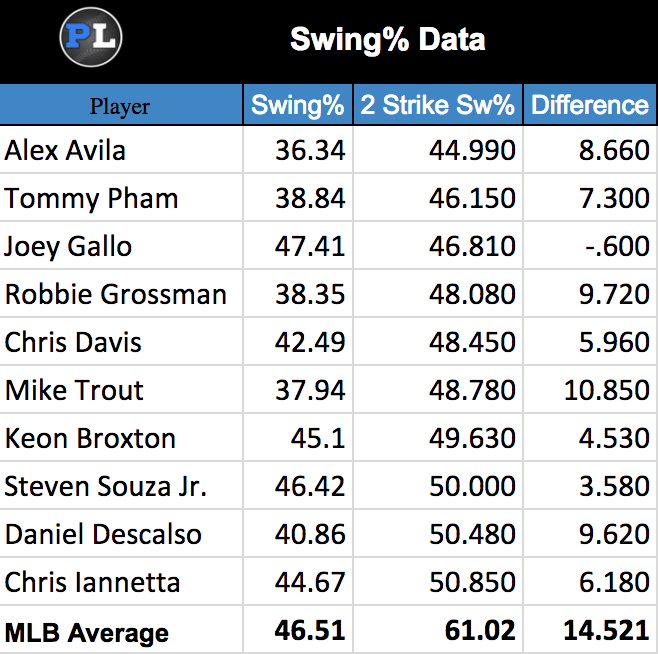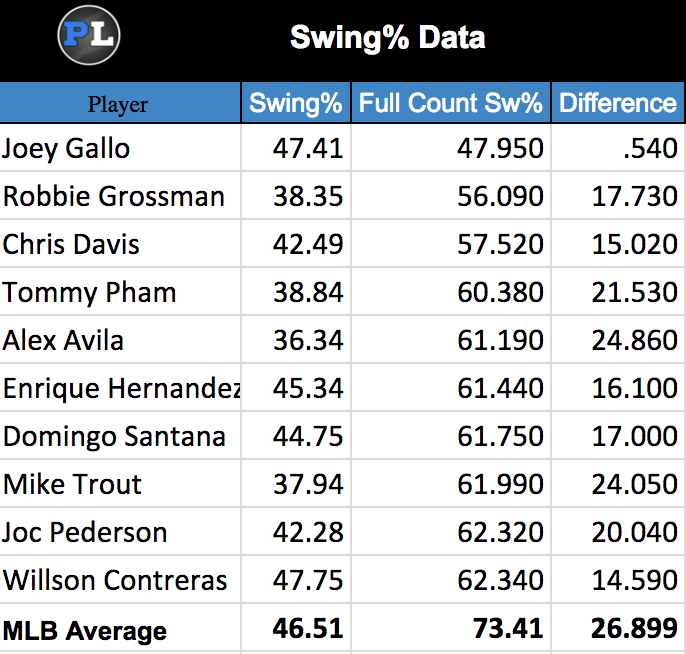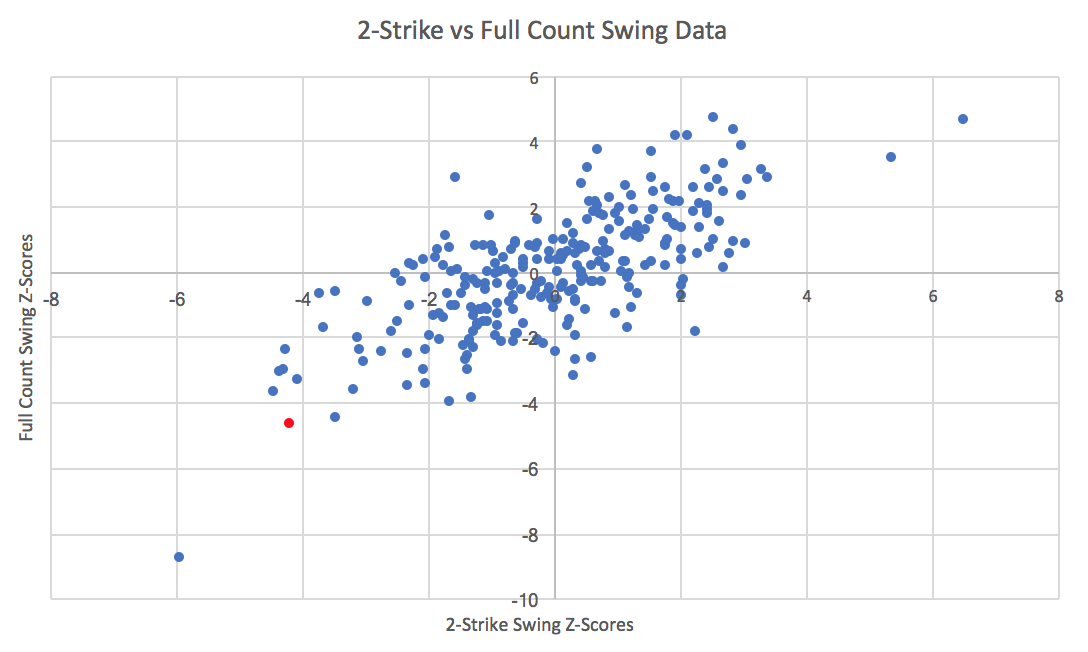(Photo by Mark Goldman/Icon Sportswire)
Chris Davis is now two seasons removed from being the incredible slugger we remember from just a few years ago. He followed up his 7.0 WAR, 53 home run 2013 season with another fantastic season in 2015, bombing 47 long balls en route to 5.4 WAR. Davis was one of the leaders of the three true outcomes style that many embrace today. He was usually walking, striking out, or hitting it out of the park. Recently, he’s been doing a lot of walking and striking out, but not enough of that hitting it out of the park thing to make him the star he was. Davis was solid in 2016, posting a 2.8 WAR, but then followed that up with a .1 WAR last season. This year, he has managed to be worth -.4 WAR in just 84 plate appearances. The results are not there, and there is one glaring problem with Davis.
Since the beginning of 2016, Davis has the 4th highest strikeout rate of hitters (min. 650 PA) at 34.6%. It’s incredibly high, but not an outlier with respect to the league. Davis was still striking out over 30% of the time in his star seasons. But in that same time period, he has struck out looking in 12.8% of his appearances. 22 hitters have struck out less overall than Davis has struck out looking. The only two players exceeding even 10% are Keon Broxton (11.7%) and Steven Souza (10.2%). Let’s look at some of the pitches Davis has watched this year:
[gfycat data_id=”FemaleFeistyIrishterrier”]
[gfycat data_id=”ShamefulCommonAfricanpiedkingfisher”]
[gfycat data_id=”GlaringFakeIndri”]
[gfycat data_id=”ColorfulFantasticAfricanbushviper”]
On all four, Davis watches a pitch down the middle, looks straight ahead, and walks back to the dugout. We aren’t looking at breaking balls bending back into the zone. We are looking at straight fastballs down the pipe that Davis just watches fly by. And those are just from this season.
Using that same since 2016 time frame, Davis has the 48th lowest swing rate of 265 hitters at 42.5%. He’s clearly a patient hitter, which you can attribute to his ability to draw walks. His basic swing tendencies do not set itself apart. But here comes the problem with him watching strikes. Davis has the fifth-lowest two strike swing rate in that time, a stark difference from his 48th ranked overall swing rate. Examine this chart, with the ten lowest hitters in two strike swing rates and the difference between their overall swing rate and two strike rate:

Davis barely changes his swing approach with two strikes. He does not rank that low in basic swing rate, but he has the tenth-lowest increase in swing rate between his overall rate and two-strike rate. The nine players in front of him, though, have an average overall swing rate of about 50%. The players who change their approach less than Davis with two strikes are already significantly more free-swingers. Davis, Broxton, and Joey Gallo are the only players in the league who have swung less than 50% of the time with two strikes and increased their two-strike swing rate less than 7%. Gallo actually has lowered his swing rate with two strikes, which, just…I don’t know what to say about that.
You can see in two of the GIFs above that Davis takes obvious strikes with a full count. So, what about swing rates with a full count, the count that generates the most swings?

Davis puts himself even closer to the bottom, having the third lowest swing rate in the league on full counts. He is even more of an outlier with full counts. Besides Gallo, who’s swing rates really make absolutely no sense, Davis is the only player with a full count swing rate less than 60% and a difference of less than 17% between his overall and full count rate. We aren’t dealing with a case of pitchers being terrified to throw strikes to him. This is not 2015 Chris Davis, but maybe Davis thinks it is, because he just refuses to swing even in situations that almost certainly demand a swing.
I calculated the z-scores for two strike swing rates, difference of overall and two strike swing rates, full count swing rates, and difference of overall and full count swing rates. I added the z-scores for the two strike swing rate and two strike difference, and the same for full count. Plotted is the two strike z-score total against the full count z-score total, with Davis highlighted in red:

Essentially, when considering how much hitters swing in two strike and full counts and how much they change swing rates compared to their overall rates, Davis is the biggest outlier. Besides our friend, Gallo, of course, down in the corner. He barely swings in those counts, and also barely increases his swing rates in those counts. This provides a clear explanation of why Davis keeps watching strikes only to be sent back to the dugout. He refuses to change. Davis is waiting for the pitches he can crush, no matter what the count. With two strikes, hitters can’t keep waiting for the pitch you think you can crush. Hitters have to protect the strike zone, but Davis seems wholly disinterested in doing so.
In an article last year by fellow PL writer Ben Palmer, he included that Davis stated, “anytime I’m taking that many called third strikes, something’s going on because I’ve never been one to really lay the bat on my shoulder.” Palmer outlined the drastic differences in his swing rates between his star seasons and the recent ones, with Davis swinging at fewer pitches of late. Davis also hinted that he was really struggling to see the ball out of the pitcher’s hand during a cold streak last year. Whatever it might be that is bothering Davis, he is going to keep striking out looking at astronomical rates if he chooses to shoulder the bat in two strike and full counts.

Drop in all formats?
I would say yes.